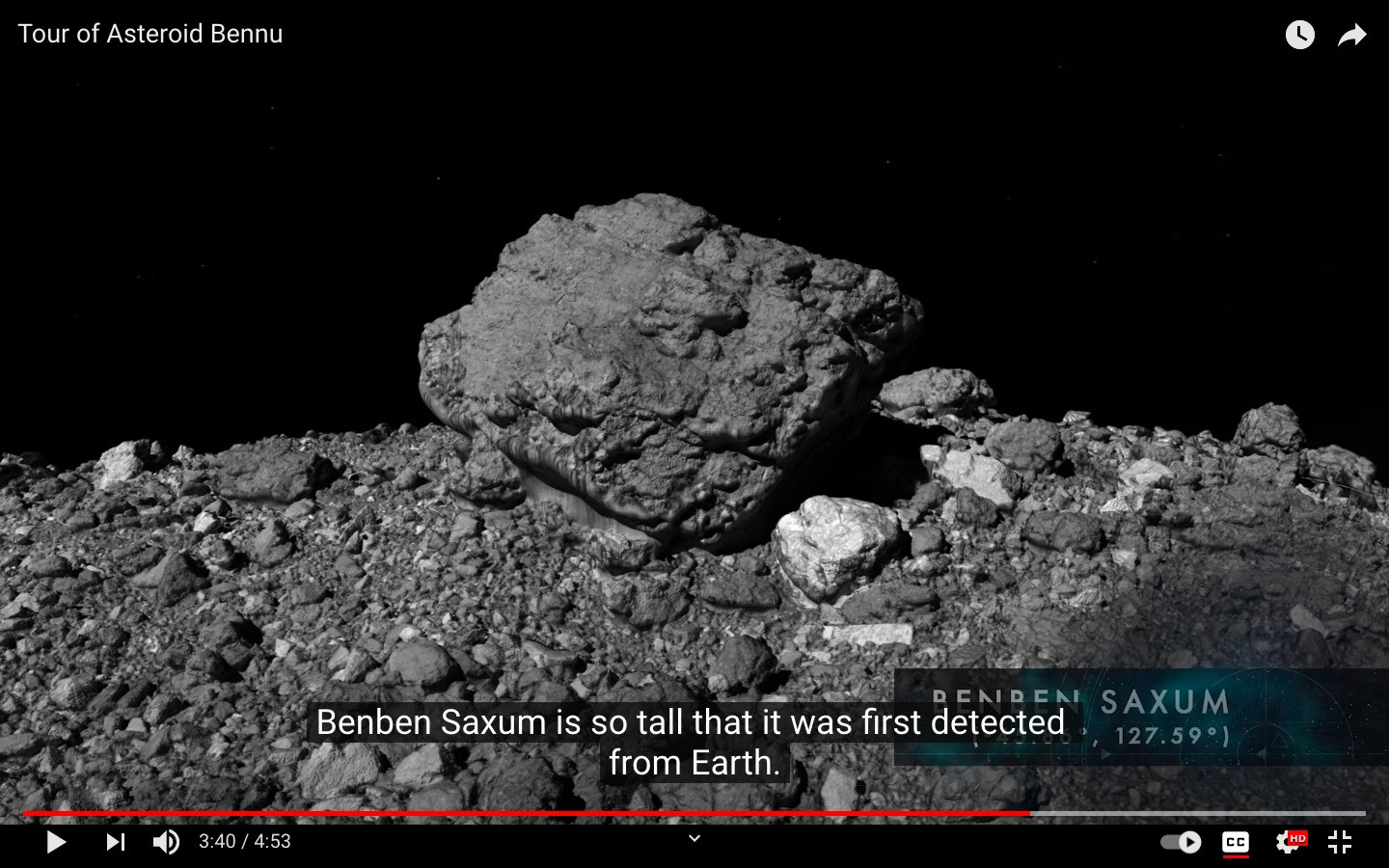Spaceref's NASA's "Tour of Asteroid Bennu" Selected for Prestigious Computer Graphics Film Festival says:
It's hard to imagine what the surface of asteroid Bennu might look like - it's shortest distance from Earth still 250,000 miles away - but the video "Tour of Asteroid Bennu" brings us on a journey to see this landscape up close.
On August 9 and 11, 2021, the video produced at NASA's Goddard Space Flight Center in Greenbelt, Maryland, will be featured in the SIGGRAPH Computer Animation Festival Electronic Theater - a high honor for those in the graphic visualization field.
While the graphics are fantastic and the "tour of Bennu's rocks" is illuminating, the narration is... well... mostly serial mythology factoidisms.
Nonetheless the serial factoids about various rocks on Bennu make it worth a listen.
In the creation stories of ancient Egypt, the universe began as a formless, endless expanse of water. From this primordial sea arose the primordial mound: Benben.
It was upon this rock that the god Atum settled, in the form of the Bennu bird, and sent forth the call that shaped creation.
The story of Benben hearkens to the mounds of fertile silt that once emerged from the receding floodwaters of the Nile, and it provides a fitting namesake for the tallest boulder on Bennu.
Protruding by over seventy feet, Benben Saxum is so tall that it was first detected from Earth. Now, we can appreciate this monumental feature in detail using data from OSIRIS-REx.
Question: How was a rock Benben Saxum on the surface of asteroid 101955 Bennu first observed from Earth? What instrument and observational technique was used in this rock detection?
- IAU Gazetteer of Planetary Nomenclature: Benben Saxum
